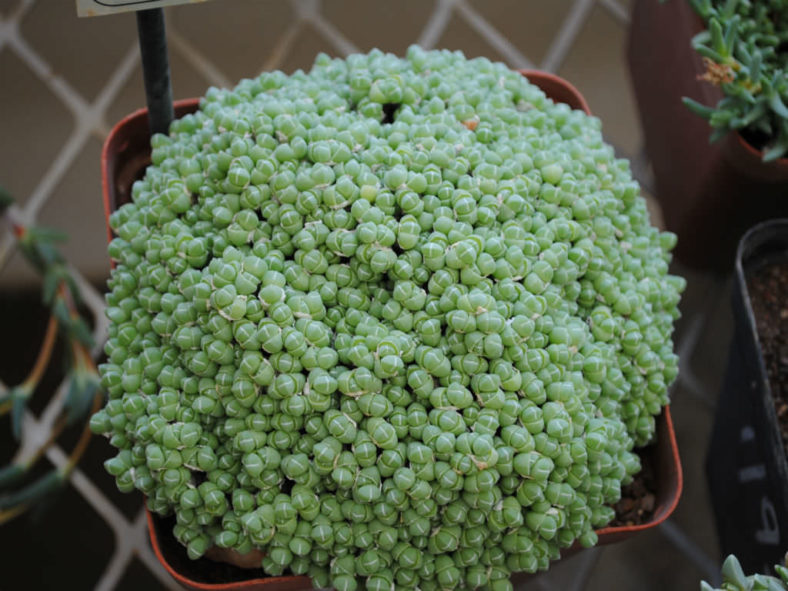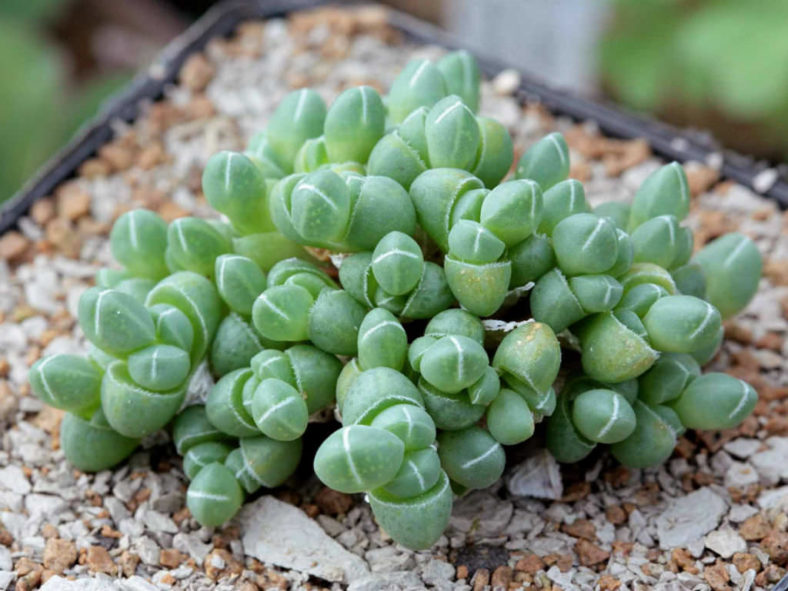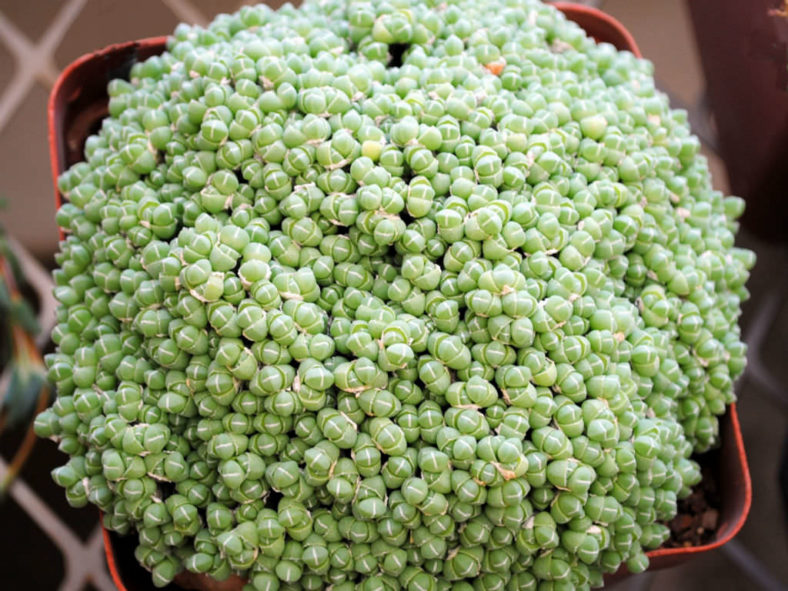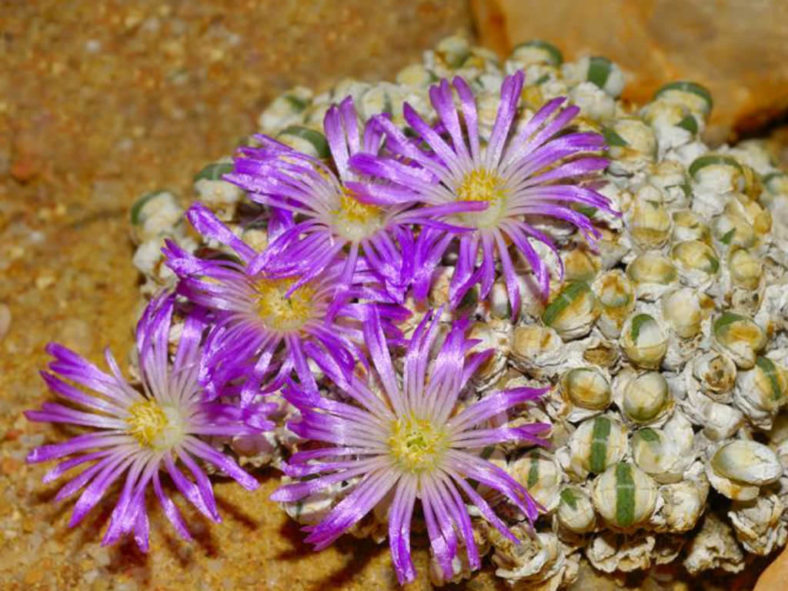Scientific Name
Antimima turneriana (L.Bolus) H.E.K.Hartmann
Synonym(s)
Mesembryanthemum evolutum, Ruschia evoluta
Scientific Classification
Family: Aizoaceae
Subfamily: Ruschioideae
Tribe: Ruschieae
Genus: Antimima
Etymology
The specific epithet "evoluta" (pronounced "eh-voh-LOO-tuh") means "unrolled, unfolded". It refers to the growth pattern of this species in which hemispherical leaf pairs unfold and push older pairs apart along the stem.
Origin
Antimima evoluta is native to South Africa. It grows in crevices of quartz and limestone rocks mixed with marble in Loeriesfontein in the Northern Cape and Knersvlakte in the Western Cape province.
Description
Antimima evoluta is a compact succulent with short branches that grow from the base, bearing a crowd of leaf pairs at their tips and forming a dense cushion or mat over time. The branches are covered with remnants of old leaves. The leaves are dissimilar in shape and size, with a tiny fringe of whitish hairs along the margins. The leaf pairs are hemispherical, up to 0.15 inches (0.4 cm) tall, nearly equal in diameter, opposite each other, and parted by each new pair pushing the old one on the stem apart for a place in the sun. Dry white remains of old leaf pairs persist here and there along the waxy, silvery-green surface of the new leaf pairs.
The flowers are daisy-like with 35 to 40 purple petals around a center of pink staminodes and yellow anthers, and usually appear in winter. They can reach a diameter of about 0.6 inches (1.5 cm). The fruits are 5-locular capsules with tiny brown seeds.

How to Grow and Care for Antimima evoluta
Hardiness: USDA hardiness zones 10a to 11b: from 30°F (-1.1°C) to 50°F (10°C).
Mesembs are primarily adapted to relatively predictable rainfall patterns rather than extreme drought and irregular rainfall. Total rainfall may be extremely low, but water is available at least seasonally or through fog and condensation. This leads to, or allows, plants that are not especially large and sometimes very small, and affects how they need to be treated in cultivation.
The basics of care are simple: free-draining soil, plenty of sun and ventilation, and regular light watering in the right season. Yet the difficulties are endless, trying to adapt to the Mesembs' adaptability and follow their growth habits in your particular conditions.
These plants require a loam-based compost with extra drainage material such as horticultural grit or perlite. They all like good light conditions and plenty of ventilation.
Some are relatively cold-hardy and can even survive mild winters outside. Most will survive temperatures down to the freezing point. Some Mesembs begin to grow in the fall as temperatures drop and days get shorter.
Learn more at How to Grow and Care for Mesembs.
Links
- Back to genus Antimima
- Succupedia: Browse succulents by Scientific Name, Common Name, Genus, Family, USDA Hardiness Zone, Origin, or cacti by Genus
Photo Gallery
Click on a photo to see a larger version.


